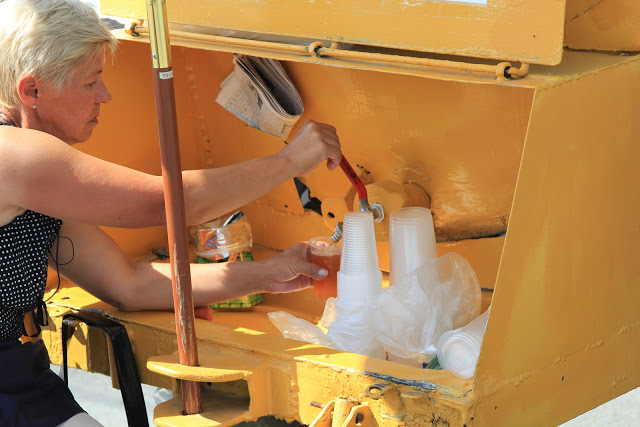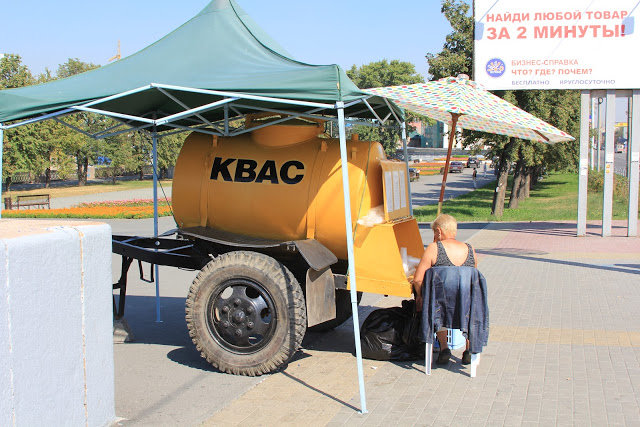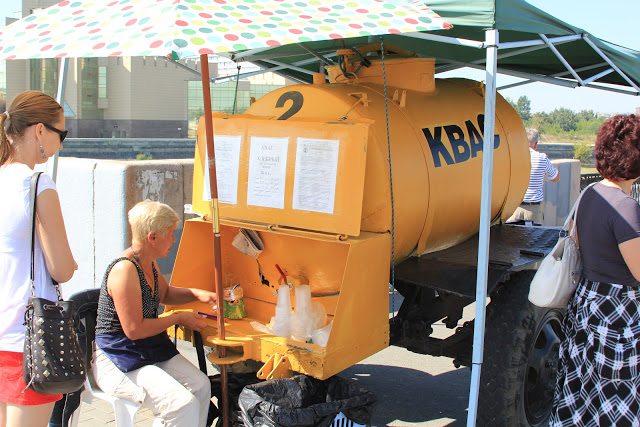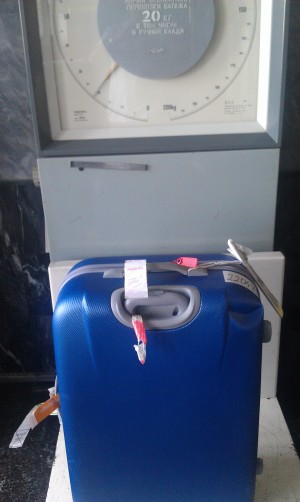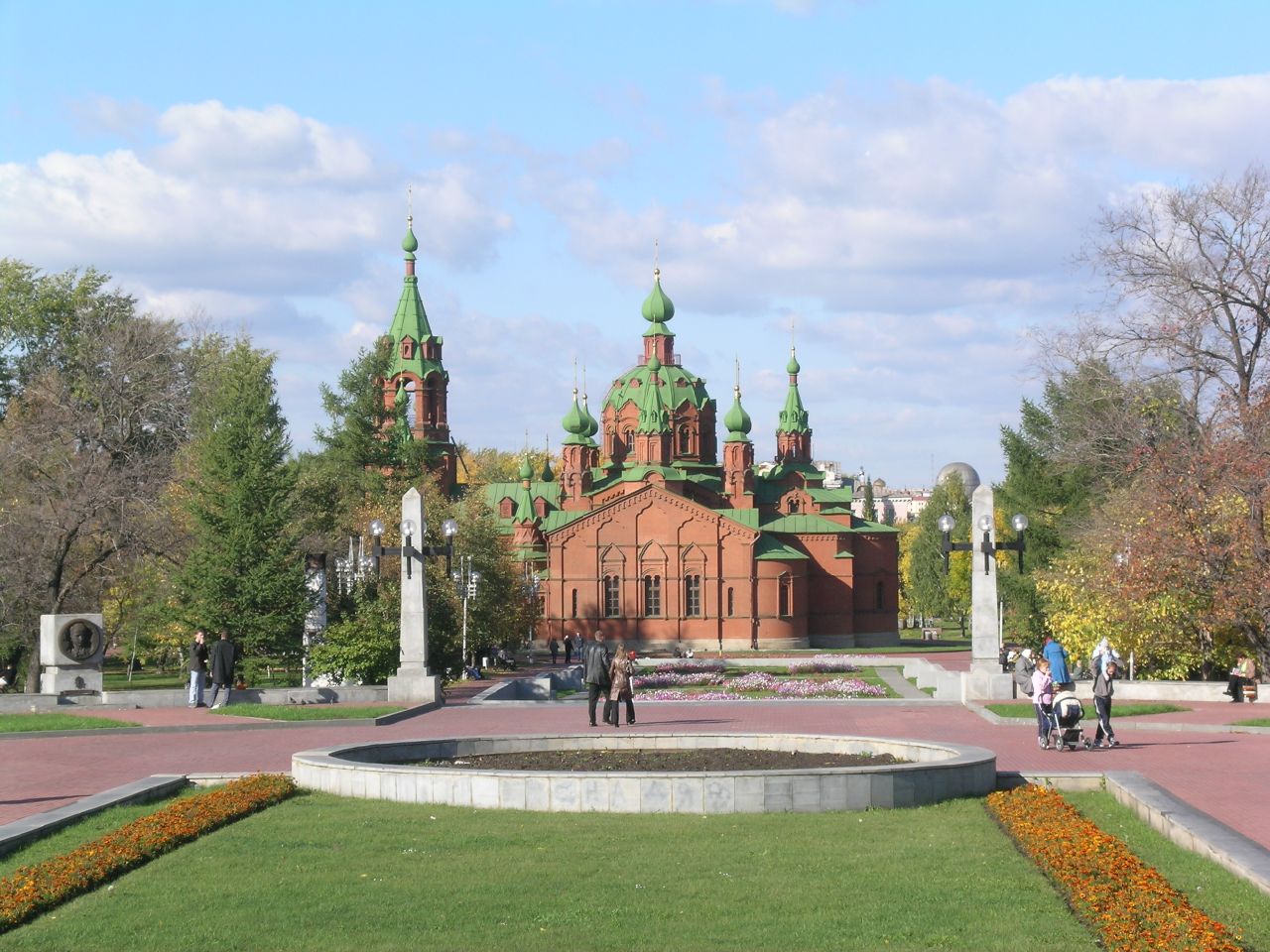And we all thought the national drink of Russian people was vodka!
Not so according to many local Russians who have been drinking this product for years.
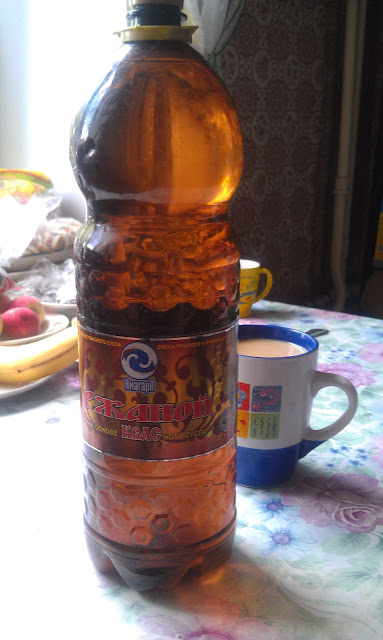
Kvass is a fermented beverage made from black or regular rye bread. The colour of the bread used contributes to the color of the resulting drink. It is classified as a non-alcoholic drink by Russian standards, as the alcohol content from fermentation is typically less than 1.2%. Overall, the alcohol content is low (0.05% – 1.0%). It is often flavored with fruits or herbs such as strawberries, raisins or mint. Kvass is also used for preparing a cold summertime soup called kroshka.
It’s popular in Russia, Belarus, Ukraine, Lithuania, Latvia, Estonia, and other Eastern and Central European countries as well as in former Soviet states, such as Kazakhstan and Armenia, where you can see many kvass vendors in the streets. Kvass is also popular in Harbin and Xinjiang, in China, where there is a strong influence of Russian culture.
Kvass has been a common drink in Eastern Europe since ancient times, comparable with other ancient fermented grain beverages including beer brewed from barley by the ancient Egyptians, the pombe or millet beer of Africa, the so-called rice wines of Asia, the chicha made with corn or cassava by the natives of America. Kvass was first mentioned in Old Rus Chronicles in the year 989. In Russia, under Peter the Great, it was the most common non-alcoholic drink in every class of society. William Tooke, describing Russian drinking habits in 1799, stated thatThe most common domestic drink is quas, a liquor prepared from pollard, meal, and bread, or from meal and malt, by an acid fermentation. It is cooling and well-tasted.
Kvass has been a common drink in Eastern Europe since ancient times, comparable with other ancient fermented grain beverages including beer brewed from barley by the ancient Egyptians, the pombe or millet beer of Africa, the so-called rice wines of Asia, the chicha made with corn or cassava by the natives of America. Kvass was first mentioned in Old Rus Chronicles in the year 989. In Russia, under Peter the Great, it was the most common non-alcoholic drink in every class of society. William Tooke, describing Russian drinking habits in 1799, stated thatThe most common domestic drink is quas, a liquor prepared from pollard, meal, and bread, or from meal and malt, by an acid fermentation. It is cooling and well-tasted.
Later, in the 19th century, it was reported to be consumed in excess by peasants, low-class citizens, and monks; in fact, it is sometimes said that it was usual for them to drink more kvass than water. It has been both a commercial product and homemade. It used to be consumed widely in most Slavic countries, where in almost every city there are kvass vendors on the street. Today it forms the basis of a multimillion-dollar industry. Kvass was once sold during the summer only, but is now produced, packaged, and sold year-round.
The town of Zvenigorod, west of Moscow, is known for its authentic, preservative-free kvass, which is brewed in the basement of the town’s Orthodox monastery.
Kvass is made by the natural fermentation of bread, such as wheat, rye, or barley, and sometimes flavoured using fruit, berries, raisins, or birch sap collected in the early spring. Modern homemade kvass most often uses black or regular rye bread, usually dried, baked into croutons (called suhari), or fried, with the addition of sugar or fruit (e.g. apples or raisins), and with a yeast culture and zakvaska (“kvass fermentation starter”).
Commercial kvass, especially less expensive varieties, is occasionally made like many other soft drinks, using sugar, carbonated water, malt extract, and flavorings. Better brands, often made by beer rather than soft drink manufacturers, usually use a variation of the traditional process to brew their products. Kvass is commonly served unfiltered, with the yeast still in it, which adds to its unique flavor as well as its high vitamin B content.
There is only one brewery in the United States that brews kvass year round. That is the Beaver Brewing Company in Beaver Falls Pennsylvania. They make it with the addition of raisins and lemons.
According to the Merriam Webster Dictionary the first mention of kvass took place sometime around 1553. Although the introduction of western soft drinks such as Coca-Cola and Pepsi had reduced the commercial sale of kvass in Russia, kvass has been more recently marketed as a patriotic alternative to cola, sparking a “kvass revival”. For example, the Russian company Nikola (whose name sounds like “not cola” in Russian) has promoted its brand of kvass with an advertising campaign emphasizing “anti cola-nisation.” Moscow-based Business Analytica reported in 2008 that bottled kvass sales had tripled since 2005 and estimated that per-capita consumption of kvass in Russia would reach three liters in 2008. Between 2005 and 2007, cola’s share of the Moscow soft drink market fell from 37% to 32%. Meanwhile, kvass’s share more than doubled over the same time period, reaching 16% in 2007. In response, Coca-Cola launched its own brand of kvass in May 2008. This is the first time a foreign company has made an appreciable entrance into the Russian kvass market. Pepsi has also signed an agreement with a Russian kvass manufacturer to act as a distribution agent. The development of new technologies for storage and distribution, and heavy advertising, have contributed to this surge in popularity; three new major brands have been introduced since 2004
